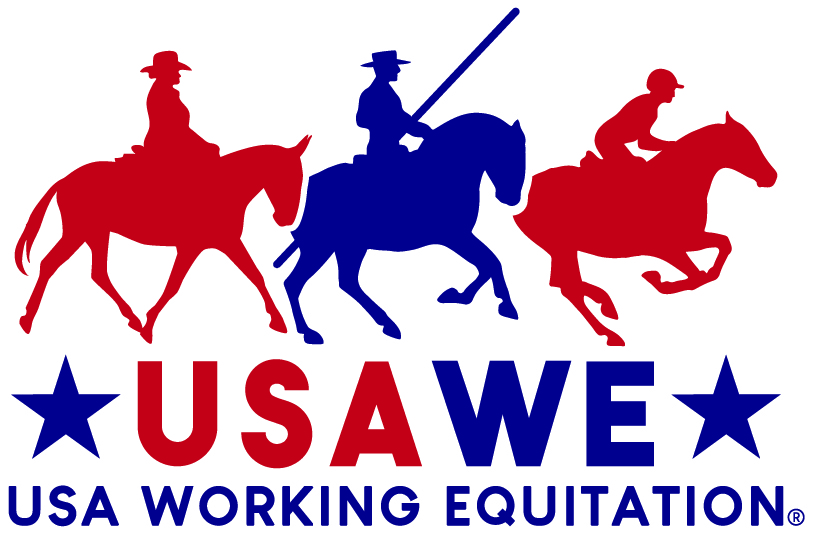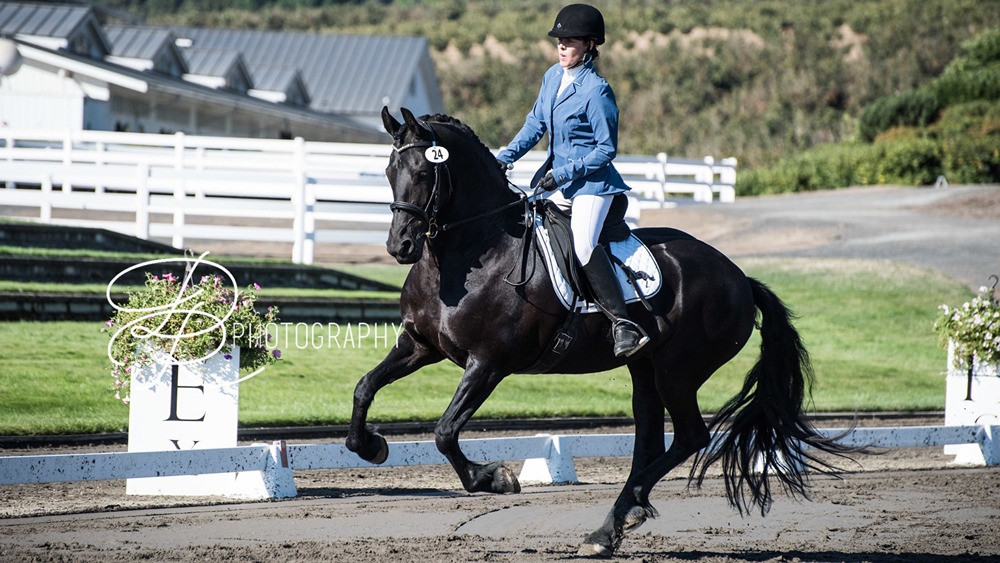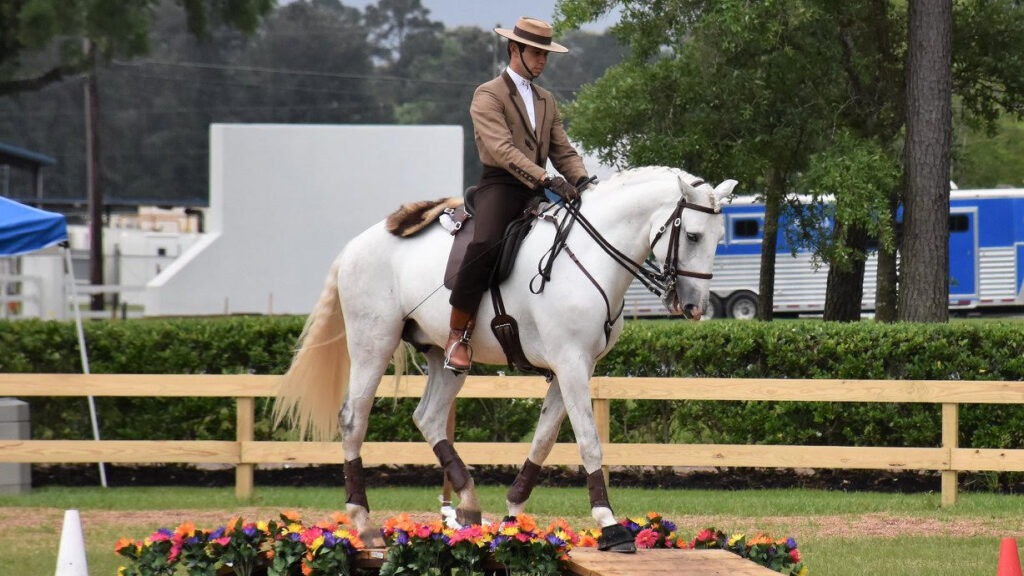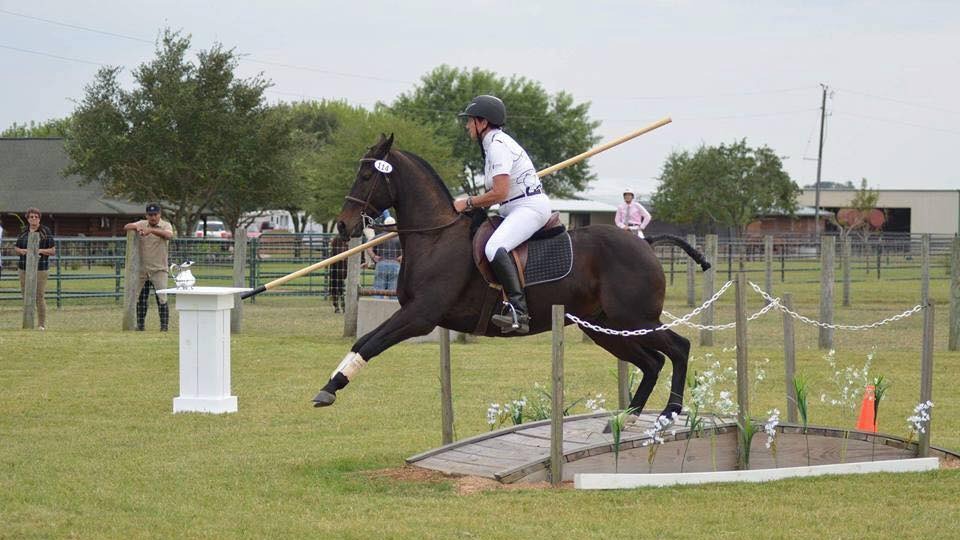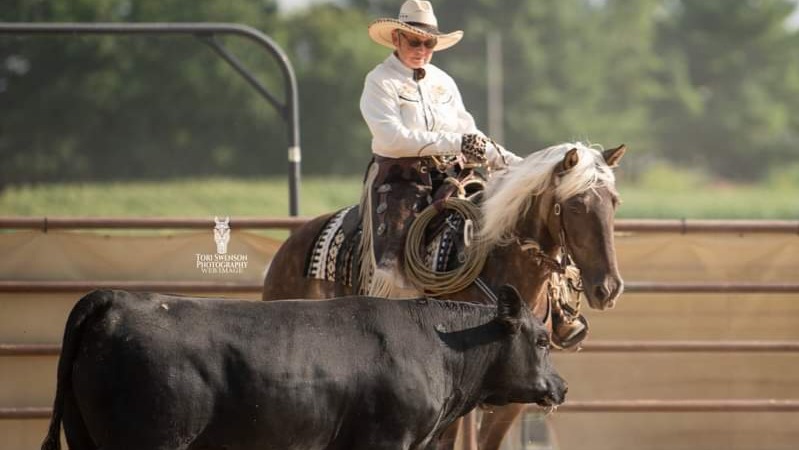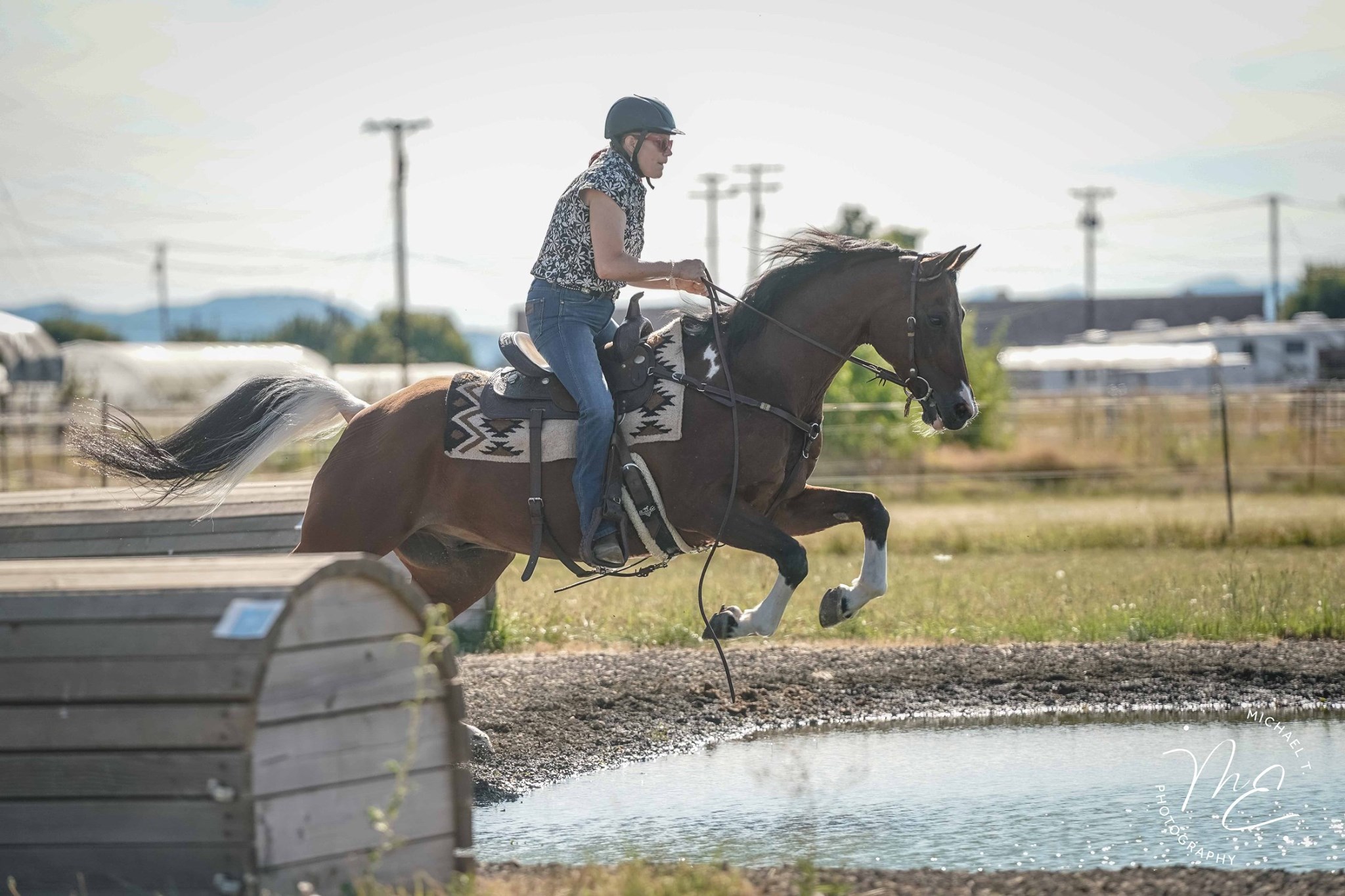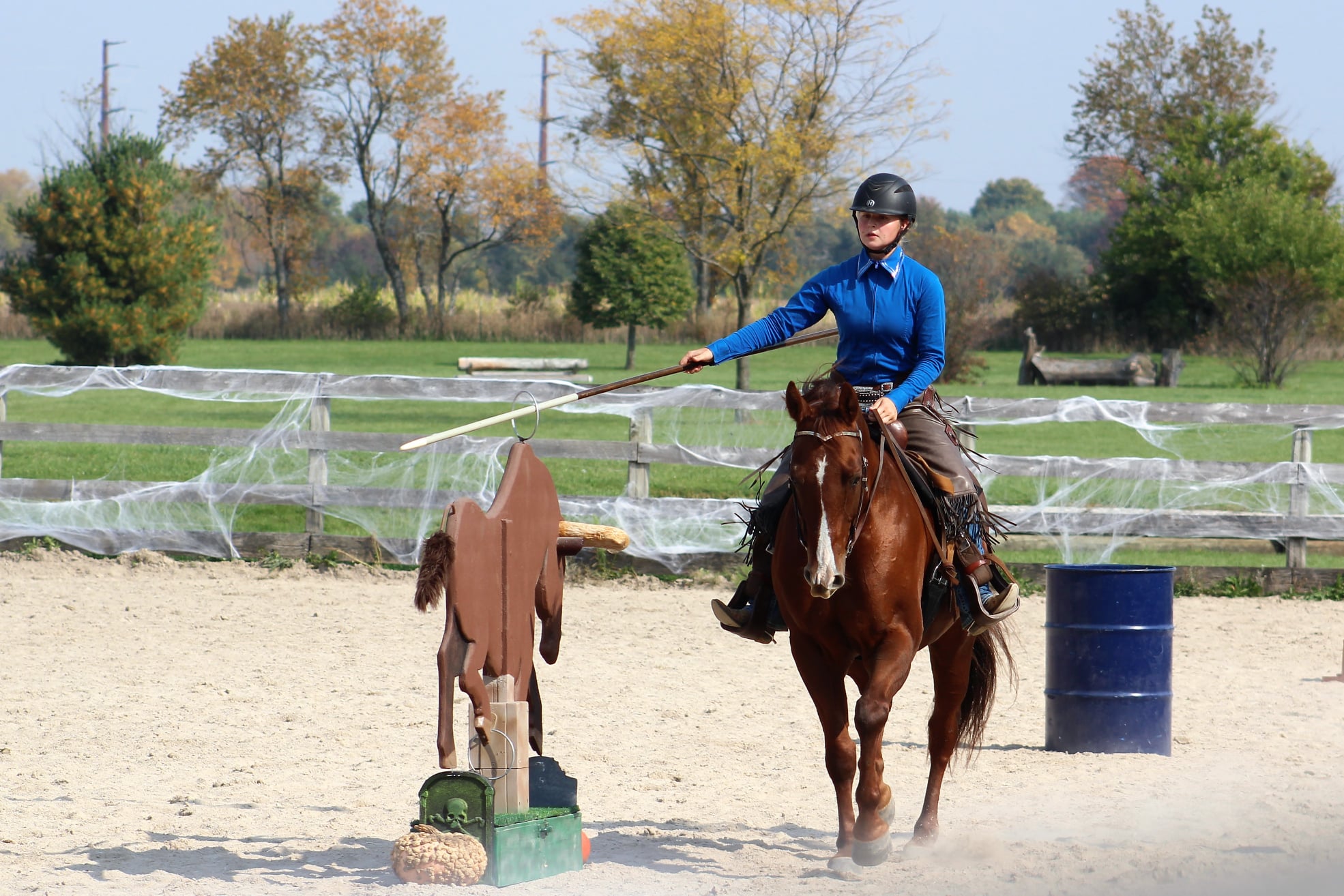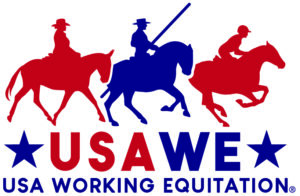Speed Trial
The Speed Trial
The third trial of Working Equitation competitions is the Speed trial. This is a test of a horse and rider’s ability to navigate obstacles with accuracy as quickly as possible. It is thrilling to watch!
Currently in the United States, the Speed trial is the final trial offered during Working Equitation individual competitions (for some competitions, the Cattle trial may be added). The Speed trial is included at all performance levels except the Introductory level.
In order to complete the Speed trial, a competitor must successfully complete a course of obstacles in the correct order. Automatic and/or official timers start taking the horse and rider’s official time on course when they pass through the start flags and stop taking the time when they pass through the finish flags.
Novice (L2/L3) riders who get a 0 score on three obstacles in EOH will not be allowed to
compete in the Speed trial. It will be scored as a disqualification for the Speed trial.
For the most up-to-date information on the obstacles and Speed trial, please refer to the most recent update of SECTION 7. SPEED TRIAL and APPENDIX B – OBSTACLES in the United States Rules for Working Equitation (Rulebook). The Rulebook takes precedence over information on this website in the event of any discrepancies.
-
- Understand Placing in the Speed Trial.
- Learn how to earn a Speed Bonus.
- Be aware of Speed Penalties.
- Avoid these Speed Disqualifications.
Placing in the Speed Trial
The final time for each horse and rider combination is calculated by taking their actual time on course minus any bonuses, plus any penalties. Competitors who are disqualified from the Speed trial receive zero (0) points for the trial and are not placed in the trial’s final placings.
Speed Bonus
When the Spear Ring obstacle is included on the Speed course, competitors can earn a bonus of 5 seconds subtracted from the final time for successfully spearing the ring and depositing it in the barrel.
Speed Penalties
During the Speed trial, certain penalties on the course result in time added to the final time. Some of these penalties include:
- +30 seconds for failing to latch the gate to the proper portion of the obstacle (this penalty is in effect when the rider has closed the gate but not to the proper latch device) or for dropping and failing to replace the gate. If the rider can collect the gate without dismounting, he/she can do so without penalty.
- +10 seconds for knocking over or dislodging by horse or rider any part of any obstacle in the arena, or knocking over the drum if the pole stays in (does not have to be reset) in the Place a Pole in a Drum obstacle.
- +5 seconds for placing the tip end of the pole in the drum or skewering the ring with the butt end of the pole, any leg stepping over a side pass pole; each leg stepping over earns a penalty; at the Advanced and Masters levels, stroking the horse or touching it on the neck in front of the rein hand (maximum of two times; third time = DQ), or failure to salute the Judge.
Speed Disqualifications
Errors of course and other errors can result in disqualification from the Speed trial. Some reasons that competitors might be disqualified from the Speed trial include:
- Going off course or crossing through an obstacle out of order.
- Passing through the course entry/exit marker(s) except when starting/finishing the ride.
- Three refusals at an individual obstacle.
- Failure to advance for 15 seconds.
- Uncorrected mistake in execution/route of an obstacle.
- Failure to enter/exit an obstacle through the markers.
- Failure to retrieve a dropped item and finish the requirements of the obstacle (except as noted in the Gate obstacle).
- Failure to ride through water in the Water obstacle without at least one of the horse’s hooves touching the water.
- Stroking the horse or touching it on the neck in front of the rein hand three times.
- Knocking down an obstacle that has not yet been completed.
- Switching the hand used to perform the obstacles (for example: opening the gate with the right hand but picking up the pole with the left hand).
- Unnecessary roughness (severe use of reins/spurs) – the Judge has the right to disqualify a competitor for excessive roughness.
- Lameness or blood on the horse (If caused by the rider, blood on the horse will result in elimination from the competition).
